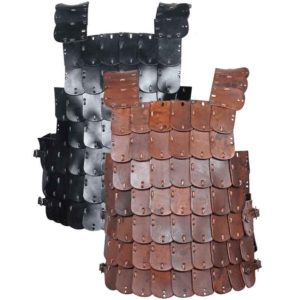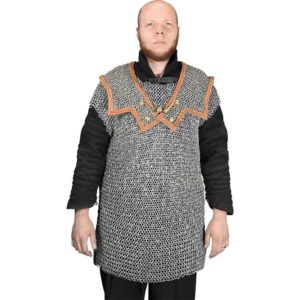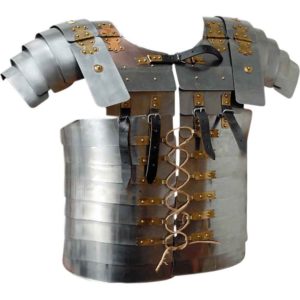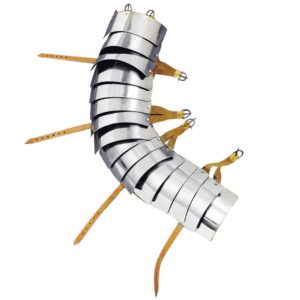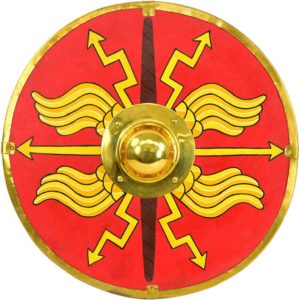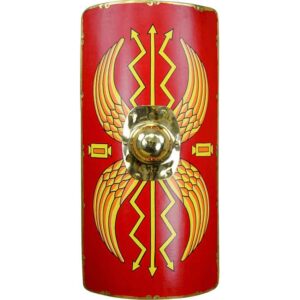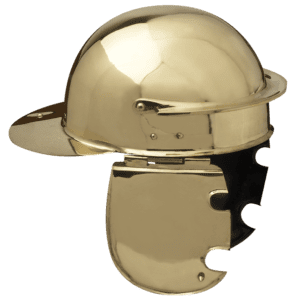Roman Armor
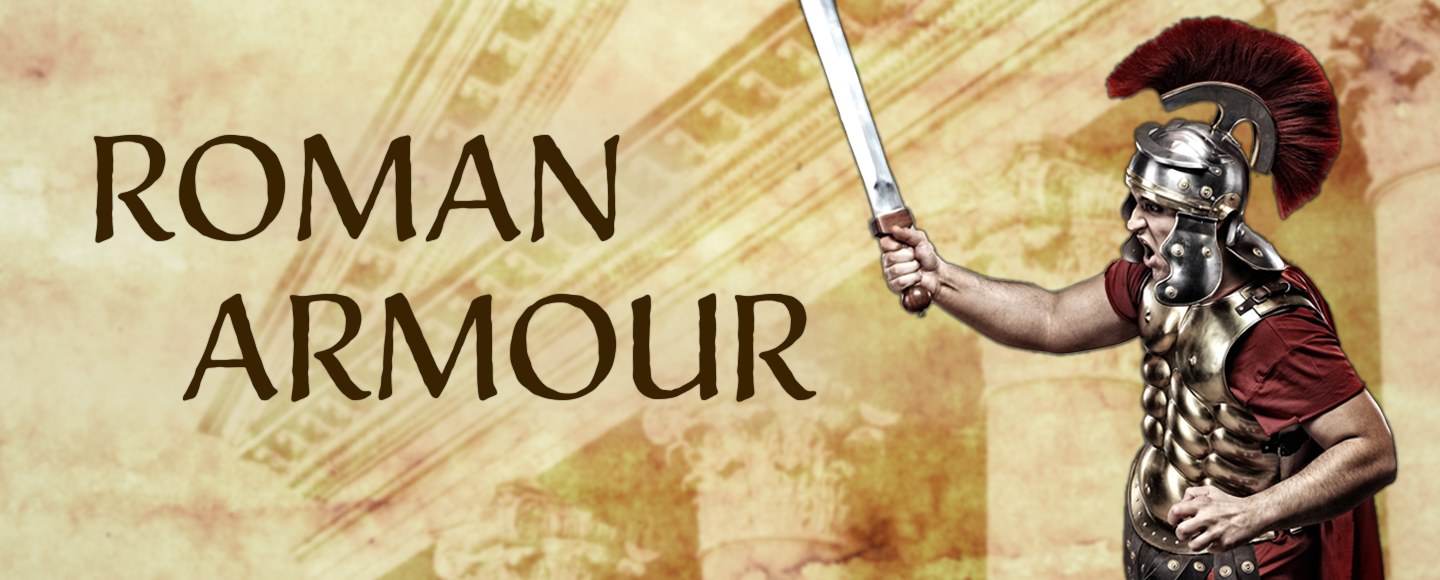
When it comes to fighting as a Roman, what armor you wear will depend upon the era that you are in. There were varying changes to the armor of a Roman soldier across the centuries. Their armor changed with their circumstances. In this post, we look at a few of the major turning points in the Roman circumstances regarding their armor as well as what those changes looked like.
Quick Overview of Roman Circumstances
Starting with early Rome, the army was based on a militia system. This meant that the army was formed from all people in Roman society. No matter the soldier, everyone would serve for the duration of a war and then return home. Thus, the quality of armor could vary wildly from soldier to soldier and only be used when there was a war. This was especially apparent with the class-based formations of the 6th century BCE.
By the Punic Wars (264-146 BC), the famous legions were created. The legions would provide the basic unit of the Roman army and serve as a model of what the typical Roman soldier would have as armor. In addition to the legionary units, there were light infantry units called velites. This group would have distinctly different armor than the legions, especially around the 3rd century BCE. The Roman army in general would get more equitable with consul Gaius Marius in 107 BCE. He would reform the Roman army during the Late Republic and ensure that all equipment for the Legions was provided for them rather than by the soldiers themselves.
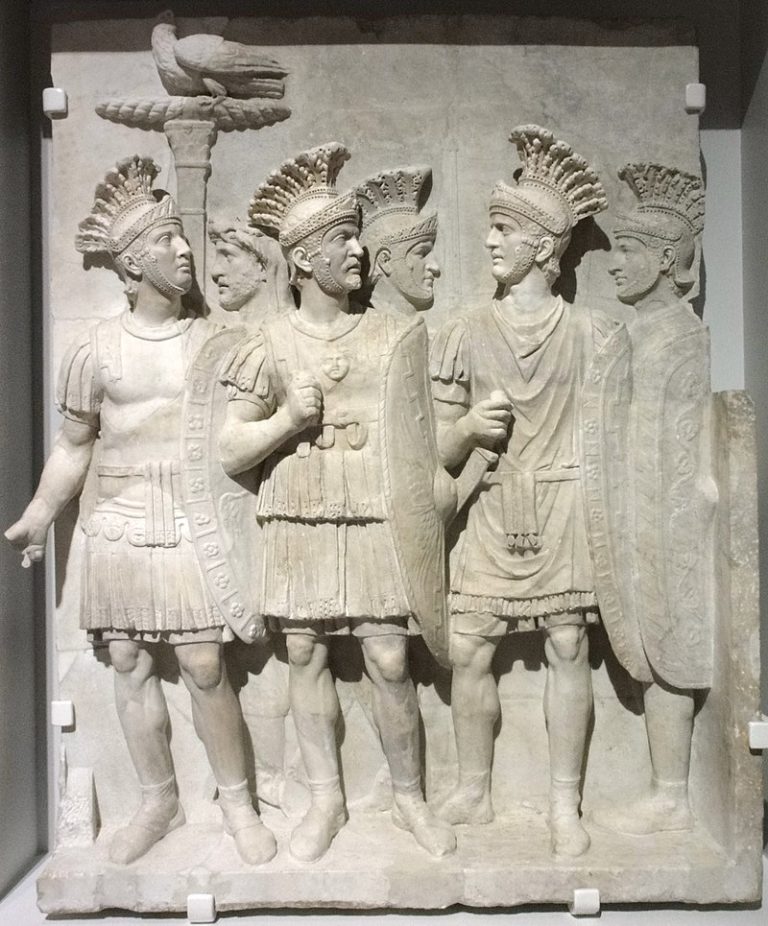
After the Roman defeat at the Teutoberg Forest, the Roman army became fully professional and added auxilliary units. They would have had similar but lighter equipment than the heavy infantry legionnaires. When it comes to the Imperial Roman armor, one of the greatest changes came through the conquest of the Dacians. The Dacian Wars were one of the very few times that Rome changed its armor because of losses to the enemy. The Dacian kingdom used the falx to great effect against the Roman armour. The falx was a curved blade with an edge on the inside curve.
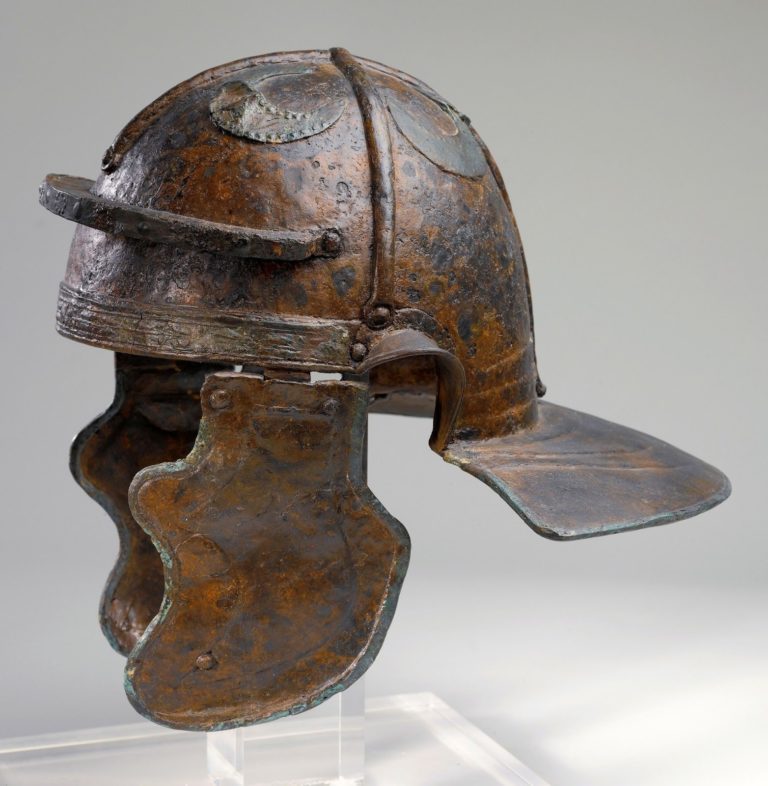
Changes to Roman Body Armor
Over the centuries, there were not many changes to the main armor worn by a Roman soldier. During the Punic Wars, most wore bronze breastplates but the wealthy would wear mail shirts. Mail armor would become more common by the time of Marius, mentioned above. Mail armor like this has the name of lorica hamata. We offer a version of this in the Lorica Hamata by House of Warfare.
Later on, mail shirts would change to cuirasses of scale armor. This means that instead of multiple small rings, it would be lots of small pieces overlapping each other. Scale armor held the name of lorica squamata for the Romans. A couple of interpretations of scale armor that we offer are the Shapur Leather Lamellar Armour and the Steel Ratio Lamellar Armour.
-
Shapur Leather Lamellar Armour
SKU: MY100586Rated 5.00 out of 5$268.00 Add to Cart This product has multiple variants. The options may be chosen on the product page -
Lorica Hamata
SKU: HW-700598Rated 0 out of 5$165.00 – $250.00 Add to Cart This product has multiple variants. The options may be chosen on the product page
The last iteration of steel armor for the Romans was lorica segmentata or plate armor. This type of plate armor was different than medieval plate armor in that Roman plate armor consisted of smaller, more numerous plates. The lorica segmentata armor received a considerable change during the Dacian wars. Arm and leg armor was added to the use of the cuirass to help protect the Roman soldier against the falx, a curved Dacian sword. The falx was able to exploit previous weaknesses in the Romans segmentata armor. The Lorica Segmentata with a couple of the Lorica Segmentata Arm Attachment creates a version of this armor update.
-
Steel Roman Lorica Segmentata
SKU: ZS-910931Rated 0 out of 5$187.00Original price was: $187.00.$170.00Current price is: $170.00. Add to Cart -
Lorica Segmentata
SKU: AH-3851Rated 0 out of 5$365.35 Add to Cart This product has multiple variants. The options may be chosen on the product page
Changes to Roman Shields
The Roman shield had the fewest changes over the course of history. The early militia and later light infantry would rely upon circular shields like the Roman Parma Shield. In contrast, the Legionnaire carried a shield called the scutum. This ever-popular shield would transition from an oval to a rectangular, semi-cylindrical design. We offer both styles in the Republican Scutum and the Wooden Roman Shield.
Changes to Roman Helmets
The Roman helmet received the most changes across the history of Roman armour. In the beginning of Roman history, Roman soldiers wore the Montefortino style of helmet. This style was also popular with other cultures at the time, as shown in the Montefortino Celtic Helmet that we offer. It has cheek guards and a rounded head. This helmet would transition into the Coolus helmet style. The Coolus would have wider cheek guards. It also added a neck guard as well as a reinforcing peak in the front. Due to the variations of armor in the Republican army, both Roman helmet styles would be worn at times until the Coolus was what was mostly worn.
The Imperial Gallic helmet would replace the Coolus and what remained of the older Montefortino. The Gallic helmet would have a broader, ribbed neck guard. It would also get a considerable update during the Dacian Wars. It received reinforcement bars on the skull. This was also in response to the falx sword. We offer multiple versions of the Gallic Helmet.
The Gallic helmet would eventually become less ornate as it transitioned into the Imperial Italic helmet. The final version of a Roman helmet would be the Intercisa or ridge helmet. It was considerably different than previous helmets. The Intercisa had two pieces with a ridge in between, connecting them. It had a small neck guard with no reinforcement in front. This design gets closer to what would be the typical Norman or Anglo-Saxon helmet in later centuries.
-
Coolus C Helmet
SKU: AH-6055NRated 0 out of 5$233.82Original price was: $233.82.$194.84Current price is: $194.84. Add to Cart
In Summary
From the early Republic to the late days of the Roman empire, the armor of a Roman soldier changed with the circumstances surrounding it. We took a quick look at some of those circumstances as well as the most popular pieces of a Roman soldier’s defense.
Sources:
https://www.worldhistory.org/article/1692/roman-armor–weapons/

